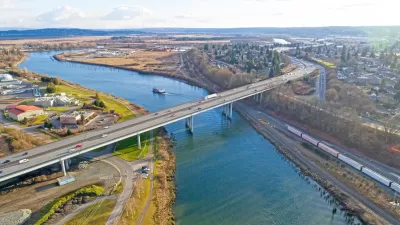A 2,100 square foot park on the banks of New York City's Gowanus Canal is part of a plan to catch pollutants from storm off from draining into the already polluted waterway.

The New York City Department of Environmental Protection is investing $1.5 million in a pilot project that will see the creation of a so-called "sponge park," designed by landscape architects at DLANDstudio. The project is part of a 20-year plan that hopes to protect local waterways through similar ecological approaches. Lisa W. Foderaro of the New York Times reports that the park will be designed to absorb water through selection of plants and inclusion of "a network of sand beds and soils." If successful, the park may serve as a model for other cities.
The park is part of a larger effort in New York City and urban areas across the country to prevent polluted storm water from flowing directly into rivers or overloading sewage treatment plants. With combined storm-sewer systems like New York’s, in which one set of pipes handles both sewage and storm water, even moderate rainfall can overwhelm treatment plants, causing raw sewage to spew into waterways.
Foderaro writes that the park will be quickly assembled using modular pieces during the spring, with completion in about eight weeks.
FULL STORY: A Park to Sop Up Pollutants Before They Flow Into the Gowanus Canal

Alabama: Trump Terminates Settlements for Black Communities Harmed By Raw Sewage
Trump deemed the landmark civil rights agreement “illegal DEI and environmental justice policy.”

Study: Maui’s Plan to Convert Vacation Rentals to Long-Term Housing Could Cause Nearly $1 Billion Economic Loss
The plan would reduce visitor accommodation by 25% resulting in 1,900 jobs lost.

Why Should We Subsidize Public Transportation?
Many public transit agencies face financial stress due to rising costs, declining fare revenue, and declining subsidies. Transit advocates must provide a strong business case for increasing public transit funding.

Paris Bike Boom Leads to Steep Drop in Air Pollution
The French city’s air quality has improved dramatically in the past 20 years, coinciding with a growth in cycling.

Why Housing Costs More to Build in California Than in Texas
Hard costs like labor and materials combined with ‘soft’ costs such as permitting make building in the San Francisco Bay Area almost three times as costly as in Texas cities.

San Diego County Sees a Rise in Urban Coyotes
San Diego County experiences a rise in urban coyotes, as sightings become prevalent throughout its urban neighbourhoods and surrounding areas.
Urban Design for Planners 1: Software Tools
This six-course series explores essential urban design concepts using open source software and equips planners with the tools they need to participate fully in the urban design process.
Planning for Universal Design
Learn the tools for implementing Universal Design in planning regulations.
Smith Gee Studio
Alamo Area Metropolitan Planning Organization
City of Santa Clarita
Institute for Housing and Urban Development Studies (IHS)
City of Grandview
Harvard GSD Executive Education
Toledo-Lucas County Plan Commissions
Salt Lake City
NYU Wagner Graduate School of Public Service




























